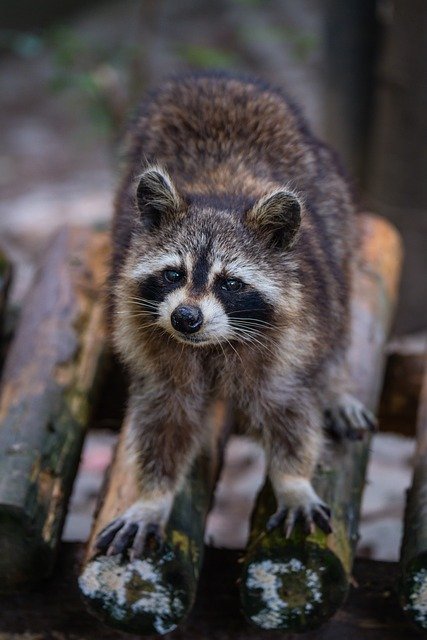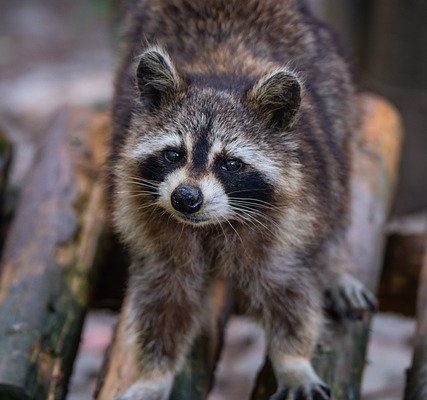
Raccoons belong to the family Procyonidae, which is home to several other interesting animals. Imagine a cozy neighborhood where each member has its own quirky traits, but they all share a common ancestor. Understanding where raccoons fit into the bigger picture of the animal kingdom can give us insight into their behavior, habitat, and why they’re often called the “bandits of the night.”
Where Do Raccoons Fit in the Animal Kingdom?
Raccoons are part of a larger group called Carnivora, which includes animals like dogs, cats, and bears. But here’s the twist: raccoons are actually more closely related to animals like coatis and kinkajous than they are to your average house cat. This connection is like finding out your cousin has a really cool pet that you never expected.
The family Procyonidae, specifically, has a rich history. Scientists believe that the ancestor of modern-day raccoons appeared over 20 million years ago. This ancestor took its first steps in the Miocene epoch, a time when the Earth was a vastly different place. Back then, lush forests and open grasslands were commonplace, providing the perfect breeding ground for diverse animal life, including our masked friends.
As time went on, the physical and behavioral traits of raccoons evolved. They developed their characteristic dexterous front paws, which allow them to manipulate objects and forage for food. This clever adaptation is one reason raccoons are so successful at scavenging in urban environments. Their remarkable skills are a testament to their adaptability and resourcefulness.
The Raccoon’s Family Tree
To truly appreciate the raccoon, we need to explore its family history. The Procyonidae family tree has many branches, with raccoons sitting on one of the most prominent ones. Raccoons share their lineage with animals like the ringtail and the aforementioned coati.
These furry relatives exhibit some similar traits but also have their unique characteristics. For instance, while a coati often travels in groups and has a long snout, raccoons are typically more solitary, using their strong limbs and cunning to navigate their environment alone. This diversity within the family highlights how different habitats and lifestyles can lead to various adaptations over time.
Interestingly, raccoons have adapted to both rural and urban settings. This flexibility can be traced back to their evolutionary history, where surviving in different environments led to fascinating changes in behavior and diet. They’re opportunistic feeders, meaning they’ll eat almost anything – from fruits and nuts to leftover pizza. Honestly, who wouldn’t want that kind of culinary variety?
Raccoon Traits That Stand Out
Raccoons are packed with distinctive traits that have helped them thrive in a variety of environments. One of their most notable features is their mask-like facial markings, which are not just for show. These dark patches help reduce glare and enhance their night vision. Think of it as nature’s built-in sunglasses, perfect for a nocturnal lifestyle.
Another fascinating trait is their highly flexible forepaws. Raccoons have a remarkable ability to open jars and unlock cages—skills that aren’t common in many other animals. Their front paws have a thumb-like structure, which enhances their dexterity. When you see a raccoon “washing” its food in water, it’s not just cute; it’s displaying a learned behavior that reflects its intelligence and adaptability. It’s almost like they’re little furry magicians, turning every obstacle into an opportunity.
But these traits didn’t develop overnight. Over millions of years, raccoons faced various challenges, from climate changes to the rise of predators. Their ability to learn and adapt quickly became essential for survival. You might be wondering what makes them so clever compared to other animals—hands down, it’s their problem-solving skills.
The Role of Raccoons in Their Ecosystem
Raccoons play an essential role in their ecosystems, often acting as scavengers. They help keep environments clean by consuming decaying matter and leftover food. This “nature’s clean-up crew” function is vital for maintaining balance in their habitats. By eating fruits, they also aid in seed dispersal, helping plants thrive in new areas.
However, their adaptability can sometimes lead to conflicts with humans, especially in urban settings. When raccoons dive into our trash cans, it can feel like an invasion. But here’s the thing: they’re just trying to survive, using the resources available to them. Understanding their role in the ecosystem can help us coexist more peacefully.
Learning about their evolutionary history helps explain their behaviors. Raccoons aren’t just mischief-makers; they’re complex creatures shaped by millions of years of adaptation. Recognizing this can shift our perspective, making us more empathetic toward these nocturnal bandits.
Raccoons and Human Interaction
Historically, raccoons have had a mixed relationship with humans. On one hand, they’ve been admired for their cleverness, and many cultures have represented them in folklore and art. On the other hand, they’re often viewed as pests due to their knack for raiding garbage cans and bird feeders.
As urban areas expand, raccoons have adapted remarkably well, finding food and shelter in places that humans frequent. This has led to encounters that can sometimes be amusing and other times quite inconvenient. Have you ever walked outside and been greeted by a pair of curious raccoon eyes staring back at you? It can be a mixed bag of fun and frustration.
Interestingly, the rise of suburban living has also led to a significant increase in raccoon populations. Instead of being pushed out, they’ve adjusted to the human landscape, showcasing their brilliant adaptability. Understanding this relationship can help foster a more harmonious existence between raccoons and people, encouraging us to take steps to coexist peacefully.
Challenges and Conservation Efforts
Despite their adaptability, raccoons face challenges today. Habitat loss, climate change, and diseases such as rabies pose significant threats to raccoon populations. As urban areas expand and natural habitats shrink, finding a safe, sustainable environment becomes tricky for them.
Conservation efforts are essential to ensure that raccoons continue to thrive. Many organizations are working to protect their habitats and promote a better understanding of raccoon behavior. Educating the public about how to manage backyard food sources and minimize human-wildlife interactions is key.
It’s not just about protecting raccoons but also about maintaining biodiversity. Each species plays a role in its ecosystem, and losing raccoons can disrupt the balance. By supporting local conservation initiatives, you can contribute to the ongoing survival of these remarkable creatures.
The evolutionary history of the raccoon is a captivating story of survival, adaptability, and complexity. From their origins in the Miocene epoch to their clever antics in our neighborhoods today, raccoons have carved a unique niche in the animal kingdom. By understanding their journey, we can appreciate not just their resilience but also their importance in our ecosystems.
Whether you see them as playful bandits or simply part of the wildlife around us, embracing our furry neighbors starts with knowledge. Let’s respect their space, learn how to coexist, and maybe even enjoy a little of their cleverness. After all, every raccoon encounter might just be a reminder of how interconnected our lives truly are.

